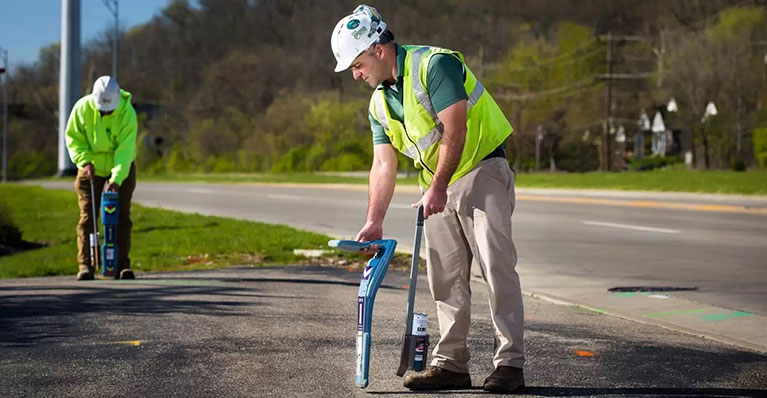Line Locating Equipment | ARentCo, Texas
Accurately locating underground utilities is crucial for safe and efficient construction, excavation, and maintenance projects. At ARentCo in Texas, we offer advanced line locating equipment to help you detect and map buried utilities. This article explores the importance of line locating, the types of equipment available, and best practices for using these tools effectively.

Importance of Line Locating
Before starting any excavation or construction project, it's essential to know the location of underground utilities to prevent:
- Accidents: Avoid hitting gas lines, electrical cables, water pipes, and communication lines that could cause serious injuries or fatalities.
- Service Interruptions: Prevent disruption of essential services such as electricity, water, and internet.
- Legal Issues: Compliance with regulations and avoiding fines for damaging public or private utility lines.
- Project Delays: Ensuring a smooth and uninterrupted workflow by avoiding unexpected obstacles.
Types of Line Locating Equipment
At ARentCo, we offer various types of line locating equipment to suit different needs:
- Magnetic Locators: Ideal for detecting ferrous metal objects such as iron pipes and steel rods.
- Pipe and Cable Locators: Designed to find both metallic and non-metallic pipes and cables, often using electromagnetic signals.
- Ground Penetrating Radar (GPR): Advanced technology that uses radar pulses to create images of subsurface structures, suitable for detecting a wide range of materials.
- Sonde Locators: Used for locating non-metallic pipes by tracking a signal-emitting device inserted into the pipe.
Benefits of Using Line Locating Equipment
- Accuracy: Precisely identifies the location of underground utilities, reducing the risk of accidental damage.
- Efficiency: Saves time by providing clear and accurate maps of underground infrastructure.
- Safety: Enhances site safety by preventing accidental strikes on utility lines. Cost-Effective: Avoids costly repairs and project delays caused by unplanned encounters with underground utilities.

Best Practices for Line Locating
- Training: Ensure operators are properly trained in using line locating equipment and interpreting the results.
- Surveying: Conduct a thorough survey of the site before starting any excavation or construction work.
- Marking: Clearly mark the locations of detected utilities on the ground to provide visual guidance for workers.
- Cross-Referencing: Use multiple methods and equipment types to cross-check and confirm the locations of utilities.
- Documentation: Keep detailed records of all findings and maps for future reference and compliance purposes.
Maintenance and Care
- Regular Calibration: Regularly calibrate the equipment according to the manufacturer's instructions to maintain accuracy.
- Cleaning: Clean the equipment after each use to prevent dirt and debris from affecting performance.
- Inspection: Periodically inspect the equipment for signs of wear or damage and replace any faulty components.
- Storage: Store the equipment in a dry, secure location to protect it from environmental damage and unauthorized use.

Conclusion
Using line locating equipment is essential for safe and efficient construction and excavation projects. At ARentCo in Texas, we provide a wide range of advanced line locating tools to meet your project needs. By following best practices and maintaining the equipment properly, you can ensure accurate results and avoid costly mistakes. Contact us today to learn more about our rental options and how our line locating equipment can benefit your next project.
Comments
Post a Comment